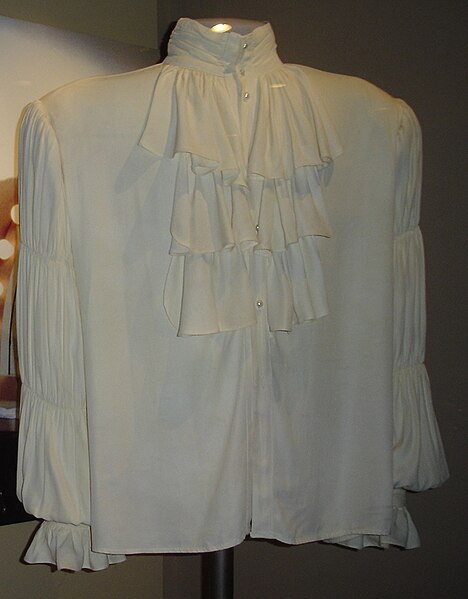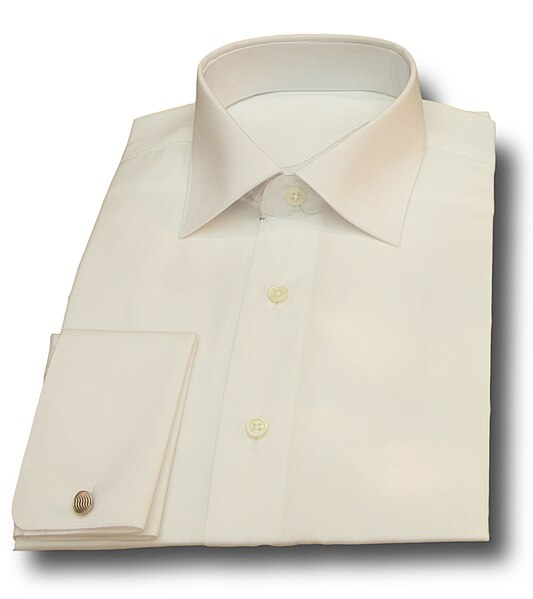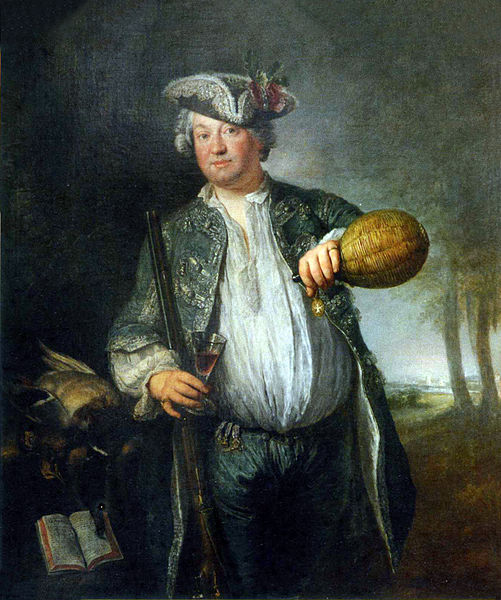A blouse is a loose-fitting upper garment that may be worn by workmen, peasants, artists, women, and children. It is typically gathered at the waist or hips so that it hangs loosely ("blouses") over the wearer's body. Today, the word most commonly refers to a girl's or woman's dress shirt, although there is considerable confusion between a true blouse and a women's shirt. It can also refer to a man's shirt if it is a loose-fitting style, though it rarely is. Traditionally, the term has been used to refer to a shirt which blouses out or has an unmistakably feminine appearance, although even many "standard" shirts today have a somewhat blousy fit, and the numbers of men wearing such shirts may match that of women wearing actual blouses.
A modern striped bow tie neck blouse and a navy blue mini skirt.
A camisole being used as a blouse.
A man and woman wearing poet shirts—a unisex blouse, inspired by Romanticism and worn by fashionable people such as the English poet, Lord Byron
The Seinfeld "puffy shirt", worn by Jerry Seinfeld, is an example of a poet shirt blouse.
A dress shirt, button shirt, button-front, button-front shirt, or button-up shirt is a garment with a collar and a full-length opening at the front, which is fastened using buttons or shirt studs. A button-down or button-down shirt is a dress shirt with a button-down collar – a collar having the ends fastened to the shirt with buttons.
A folded white dress shirt with French double cuffs.
In 17th century, men's shirts and cuffs were embellished with fine lace.
The shirt was worn under the Justaucorps in the 18th century
Spread collars measure from around 3+1⁄2 to 8+1⁄2 inches (89 to 216 mm) between the collar points.








